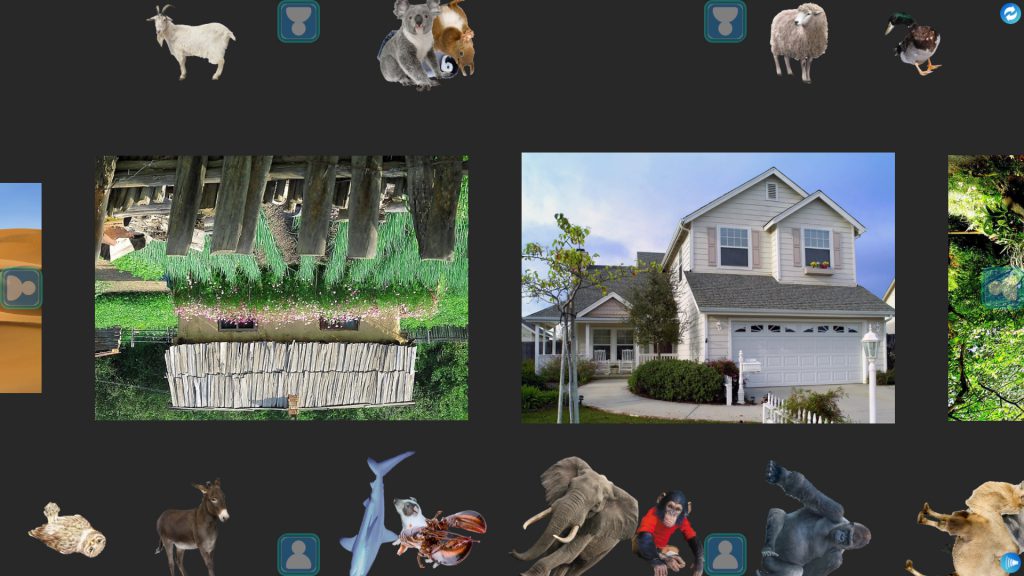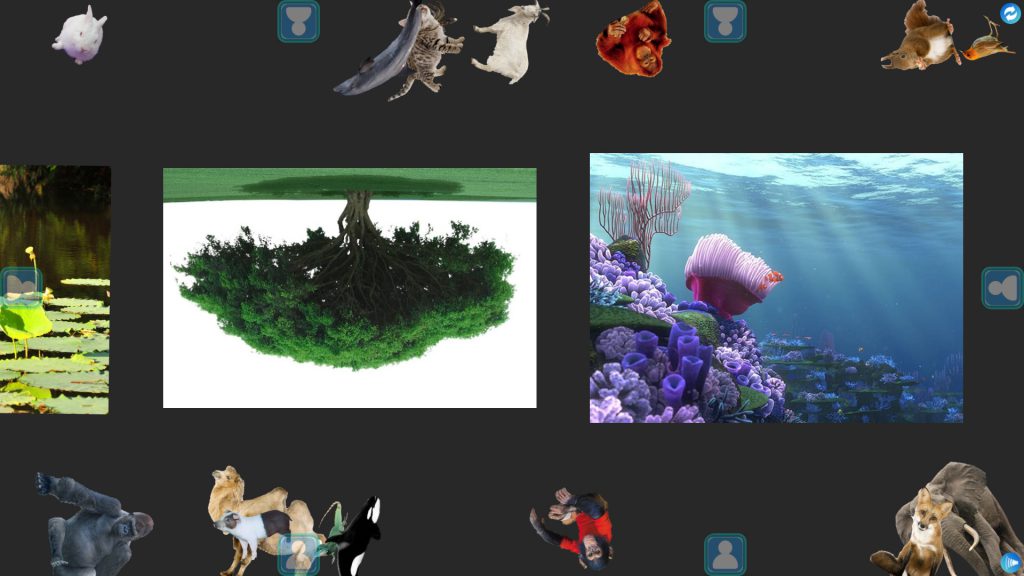
Activity goal
- Know that each animal has a suitable living environment;
- Be able to find habitats for the animals appearing in the course;
- Love animals and have the consciousness of protecting animals.
Activity procedure
- Story import
Chickens and ducklings live on the farm, and they always want to see the outside world. One day, they received three friends from far away.
One was a chimpanzee from the African bush. He spoke with a foreign accent, introduced the wild animals in Africa, and amused the chickens and ducklings.
The other was a camel from the desert. It is tall and tall, with two hills on its back. A camel calls this a hump. It often lacks water and food when living in the desert. With a hump, it can store nutrients for the body first.
There is also a penguin from an Antarctic glacier who looks like a gentleman. The body is round and round, which is very attractive. He tells his friends interesting things about the glacier.
The chickens and ducklings now know that the farm is the best place for them to live.
- Discussion: Where do the animals in the story live?
Chimps: The African Bush
Chickens and Ducks: The Farm
Camel: desert
Penguins: Antarctic Glaciers
- Find and guess.
Ask the children to find the place where the animals in the story live on the desk. After finding it, see where else is on the desk? What are the characteristics of each? Guess which animals live here?
The animal habitats provided in the courseware include: forests, glaciers, fields, deserts, farms, houses, jungles, ponds, trees, water, etc.
- What kind of animal is this? Follow up and read English.
☋ Which animals did the children see? What do they look like?
☋ Tap it, and you will hear its name, and the children will read it along.
Bird (bird), Camel (camel), Cat (cat), Chameleon (chameleon), Chick (chicken), Chimpanzee (chimpanzee), Crab (crab), Dog (dog), Dolphin (dolphin), Donkey (donkey) , Duck (duck), Elephant (elephant), Fish (fish), Fox (fox), Goat (goat), Gorilla (gorilla), Horse (horse), Iguana (iguana), Koala (koala), Leopard (leopard), Lion (lion), Lobster (lobster), Mouse (mouse), Octopus (octopus), Orangutan (orangutan), Owl (owl), Penguin (penguin), Pig (pig), Rabbit (rabbit), Rhinoceros (rhinoceros), Rooster (rooster), Shark (shark), Sheep (sheep), Snake (snake), Squirrel (squirrel), Tiger (tiger), Toad (toad), Whale (whale).
☋ Select the “Restart” button in the toolbox and a different set of animals will appear.
- Where do the animals live?
(For hands-on activities, the children sitting around the MedoActive desk naturally form a group.)
Now ask the group members to work together to find their habitats for the animals that appear on Mickey’s desk. Select the “Restart” button when you’re done and a different set of animals will appear.
Summarize
➜Children think about it, if the fish leave the water, the sheep leave the grass, and the penguins leave the glacier, can they still live normally?
cannot. Animals can live normally only in a suitable environment.
➜Which animal do the children like the most they met today? Are you willing to protect it? How to protect it?

If you are interested in learning more, please contact us
StoneTouch Tech (Zhuhai) Co. Ltd.
3rd Floor, Building 18, Hengqin Macau Youth Entrepreneurship Valley, Zhuhai
Tel:0756-6969319
Email: sales@stonetouch.cn
Website: www.stonetouch.cn
Wechat public account:


